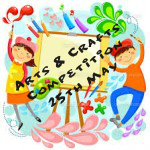Medieval Death
Posted by: aragonbilingue | on agosto 21, 2017
The University of Cambridge offers Medieval Studies among its International Summer Programmes. In August 2017, it included two courses about The Black Death and Medieval Death and Dying that I attended thanks to the Erasmus+ project of my school. Although probably not every one agrees, these topics can be interesting not only for scholars, but also for secondary students. In a time when walking dead and forensic research are increasingly present in the entertainment and popular culture, some school activities could be developed from those topics. Let’s see some possible sources to study medieval death.
The following text is extracted from Life and miracles of Saint Modwenna written in Latin by Geoffrey of Burton in the 12th century:
«[…] That very same day on which they were interred they appeared at evening, while the sun was still up, at Drakelow, carrying on their shoulders the wooden coffins in which they had been buried. The whole following night they walked through the paths and fields of the village, now in the shape of men carrying wooden coffins on their shoulders, now in the likeness of bears or dogs or other animals. They spoke to the other peasants […]»
This photo pictures a medieval shrine showing holes for touching the relics presumably of Saint Osmund, who died in 1099, and it is kept at Salisbury Cathedral.
This article about the Black Death explains the huge impact of the plague on the medieval European people. This summary is a good introduction to know more about the Black Death in the past and in recent times. This presentation is useful for visual learners and updates the information available about the Black Death from the last research.
This archeological research can be the base for a forensic case study on medieval bones.
Posted in 2 ESO, C. - SECUNDARIA, Literacy, Noticias, Social Sciences, Teacher training | No Comments »
Tags: Erasmus+, History, Teacher training





 D5 Creation
D5 Creation